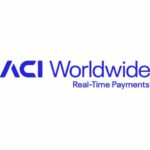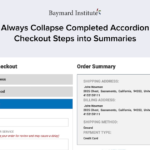No matter the application, the guiding principle behind tokenization remains the same: replacing sensitive data with a digital representation (token) that protects that data.
Recent weeks and months have seen the rise of what we might term two “tracks” of tokenization. There’s payment tokenization, and then there’s the tokenization of real-world assets (RWA). The former protects card-level details and the cardholder through a digital representation of the 16-digit card details that is without value. The latter streamlines the transfer of assets, such as stocks, bonds and real estate, between parties.
Mastercard, for example, plans to phase out the need to enter card numbers, static passwords and one-time codes when making online purchases by the end of the decade through tokenization and biometric authentication.
The company’s tokenization technology has reduced cart abandonment and increased transaction approvals by 3 to 6 percentage points, while also minimizing the risk of fraud, as 30% of the payments network’s transactions are tokenized.
During Visa’s most recent earnings call Oct. 29, management said more than 30% of the firm’s transactions are tokenized, and Visa has issued more than 11.5 billion tokens.
The PYMNTS Intelligence report “The Tokenization Innovation Report: The Future of Security and Personalization” found that 78% of merchants enable network or payment tokens. Larger merchants are more familiar with tokenization. Eighty percent of merchants generating $10 million to $50 million in annual revenue are “very or extremely familiar” with payment data tokenization solutions, more than the corresponding 35% of those generating $1 million to $5 million and 14% of those generating less than $1 million in annual revenue. Another 97% of payment service providers use network tokens to provide digital wallet payments.
The growing awareness of tokenization comes as roughly two-thirds of merchants said they had experienced payments fraud; more than three-quarters said they had seen at least some online transactions fail, per the report.
Tokenizing Real-World Assets
Total tokenized market capitalization could reach $2 trillion by 2030, McKinsey estimated.
Last month, Visa debuted its Visa Tokenized Asset Platform (VTAP), which allows banking partners “to create and experiment with their own fiat-backed tokens in a VTAP sandbox.” In an initial use case, the platform enabled the issuance, transfer and redemption of a bank token on a blockchain, along with interactions of the token with smart contracts.
Last week, Tether launched its own RWA tokenization platform, dubbed Hadron, which lets users “tokenize anything, anywhere,” including everything from stocks to loyalty points.
In March, BlackRock unveiled its first tokenized fund issued on a public blockchain, the BlackRock USD Institutional Digital Liquidity Fund (BUIDL). The company said last week that it expanded the offering, “by enabling BUIDL to be used within leading blockchain-based financial products and infrastructure across ecosystems.”
In another example, Citigroup partnered with Wellington Management and WisdomTree in February to explore the tokenization of private markets.






